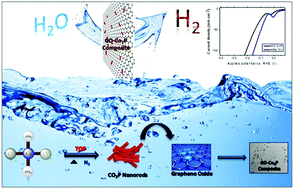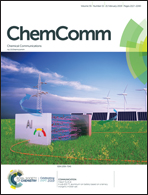Graphene oxide supported cobalt phosphide nanorods designed from a molecular complex for efficient hydrogen evolution at low overpotential†
Abstract
Thermolysis of molecular inorganic complex [CoCl2(PPh3)2] has resulted in uniform Co2P nanorods which on grafting on graphene oxide exhibit ultra high hydrogen evolution activity with a cathodic current density of 100 mA cm−2 at an overpotential of 154 mV and excellent stability for at least 70 h.



 Please wait while we load your content...
Please wait while we load your content...